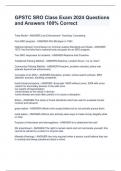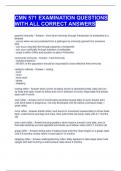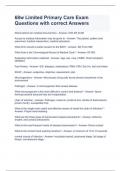Experiment 5: Rotational Inertia of Disk and Ring
EQUIPMENT REQUIRED
Note: If you are
- DataStudio Program - Mass and Hanger Set
using a PASPORT
- PASCO Interface (see Note) - Paper Clips (for masses < 1 g) interface, you will
- Rotational Inertia Accessory (ME-8953) - Balance also need a Digital
- Photogate/Pulley System - Calipers Adapter (PS-2159)
Purpose
The purpose of this experiment is to find the rotational inertia of a ring and a disk experimentally
and to verify that these values correspond to the calculated theoretical values.
Theory
Theoretically, the rotational inertia, I, of a ring about its center of mass is given
by:
R1 R2
1 2 2
I = --- M ( R 1 + R2 )
2
where M is the mass of the ring, R1 is the inner radius of the ring, and R2 is the
outer radius of the ring. See Figure 5.1.
The rotational inertia of a disk about its center of mass is given by:
Figure 5.1: Ring
1 2
I = --- MR
2
where M is the mass of the disk and R is the radius of the disk. The rotational inertia of a disk
about its diameter is given by:
1 2
I = --- MR
4
R
R
Disk about center of Mass Figure 5.2: Disk about Diameter
To find the rotational inertia experimentally, a known torque is applied to the object and the
resulting angular acceleration is measured. Since τ = Iα,
τ
I = ---
α
31
, Complete Rotational System 012-05293F
where α is the angular acceleration which is equal to a/r and τ is the torque caused by the
weight hanging from the thread which is wrapped around the base of the apparatus.
τ = rT
where r is the radius of the cylinder about which the thread is wound and T is the tension in
the thread when the apparatus is rotating.
Applying Newton’s Second Law for the hanging mass, m, gives (See Figure 5.3)
ΣF = mg – T = ma
rotational disk T
a
"A" base
hanging mg
mass
Figure 5.3: Rotational Apparatus and Free-Body Diagram
Solving for the tension in the thread gives:
T = m( g – a )
Once the linear acceleration of the mass (m) is determined, the torque and the angular
acceleration can be obtained for the calculation of the rotational inertia.
Setup
mass ring
1. Remove the track from the Rotating Platform and place the
disk directly on the center shaft as shown in Figure 5.4. The 10-spoke pulley with
rotational
photogate head
side of the disk that has the indentation for the ring should disk
be up.
2. Place the ring on the disk, seating it in this indentation.
3. Mount the Photogate/Pulley System to the base and connect
it to a PASCO interface. "A" base
4. Attach a thread to the top step of the three-step pulley on the mass and
hanger
Rotational Apparatus shaft and suspend the string over the
pulley of the Photogate/Pulley System. Attach a hanger and
mass to the end of the thread.
5. Start the DataStudio program. Figure 5.4: Set-up for Disk and Ring
Procedure
Measurements for the Theoretical Rotational Inertia
1. Weigh the ring and disk to find their masses and record these masses in Table 5.1.
2. Measure the inside and outside diameters of the ring and calculate the radii R1 and R2. Record in
Table 5.1.
3. Measure the diameter of the disk and calculate the radius R and record it in Table 5.1.
32




